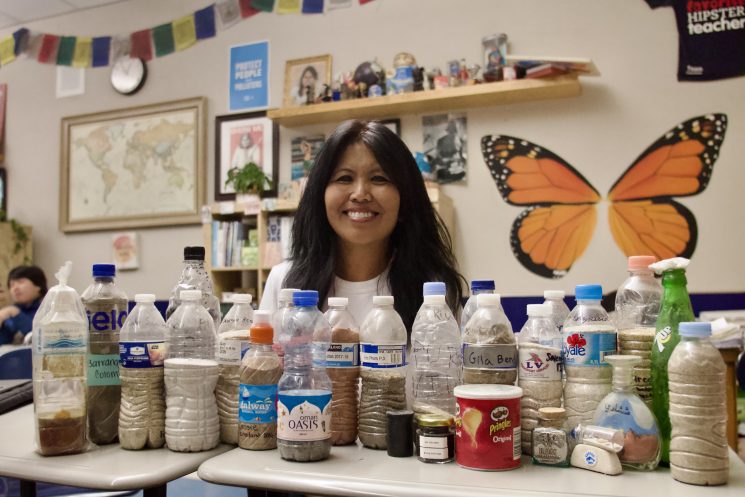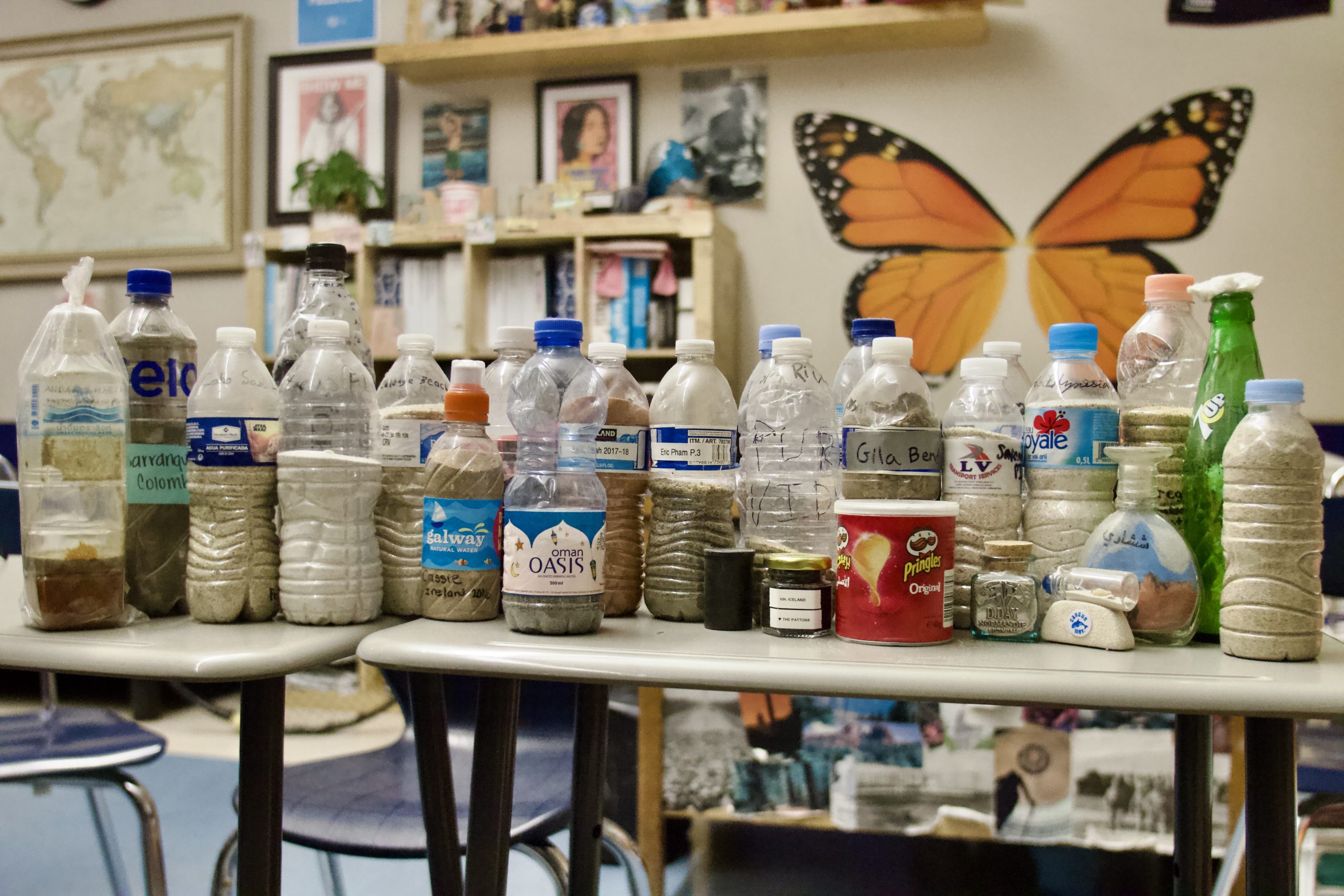
By Andrew Georgy
Collections are often extravagant and costly, whether collecting rare coins, trading cards or signed shirts. Yet, oftentimes, you’ll come across a peculiar collection. Maybe it’s not as expensive or fancy, but it still holds much value to the collector.
For Julie Chaicharee, Fountain Valley High School’s AP Human Geography, Model United Nations and United States Government teacher, it’s her established collection of sand.
Chaicharee first started her collection at the beginning of her teaching career as a nice look into the past.
“When did I start? I would say probably my second or third year teaching, so it’s been 20 years or two decades of collecting sand,” Chaicharee said.
Although sand isn’t rare, Chaicharee looks beyond its materialistic value. She emphasizes that remembering the students who contributed to her collection is more crucial than the monetary value. In fact, she specifically asks for sand because it’s easier for students to collect.
“Most of these sand collections are from children, from my students, not from me. I mean, I do have some, but most are from my students, who go on trips and [they] bring me back sand,” Chaicharee said. “And, that’s why I say, why sand? Because sand is inexpensive and free.”

Due to her students’ persistence in contributing, Chaicharee’s collection has grown to include over 100 samples worldwide.
“Oh, my goodness, at least, I don’t know, have you counted? It looks like at least 50 different places, and at least maybe about 75 to 100 bottles,” Chaicharee said when asked about the size of her collection.
While most of her collection comprises donations from former students, Chaicharee believes that the incentive of collecting sand for her own collections has furthered her travels, her most recent being a full tour of Europe.
Although she doesn’t remember where she first started the collection, Chaicharee does remember her most recent addition.
“Oh my goodness, I can’t even remember what’s my first one, but my most recent that I have collected, [I would say] Iceland. Yes, it’s a beach in the southern portion of Iceland, Vic,” Chaicharee said.
As to what type of sand she collects, Chaicharee doesn’t prioritize any kind as long as it isn’t polluted.
“I want every [type of] sand,” Chaicharee said, “except for those cigarette butts, [such as] the ones at the hotels where they collect their cigarettes.”
When asked about her most unique or favorite bottle, Chaicharee emphasized that the randomness or isolation of a certain place is what interests her, although she doesn’t necessarily have a clear winner.
“I guess the most unique are the ones that it’s hard to get to, so or just so random. So I don’t necessarily have a favorite one. It’s just nice to see,” Chaicharee said. “I’m like, ‘Oh my gosh, look at this. This is from Egypt, the [United Arab Emirates], Dubai or Uzbekistan.”
Chaicharee hopes every new school year brings more additions and stories to her beloved collection.





